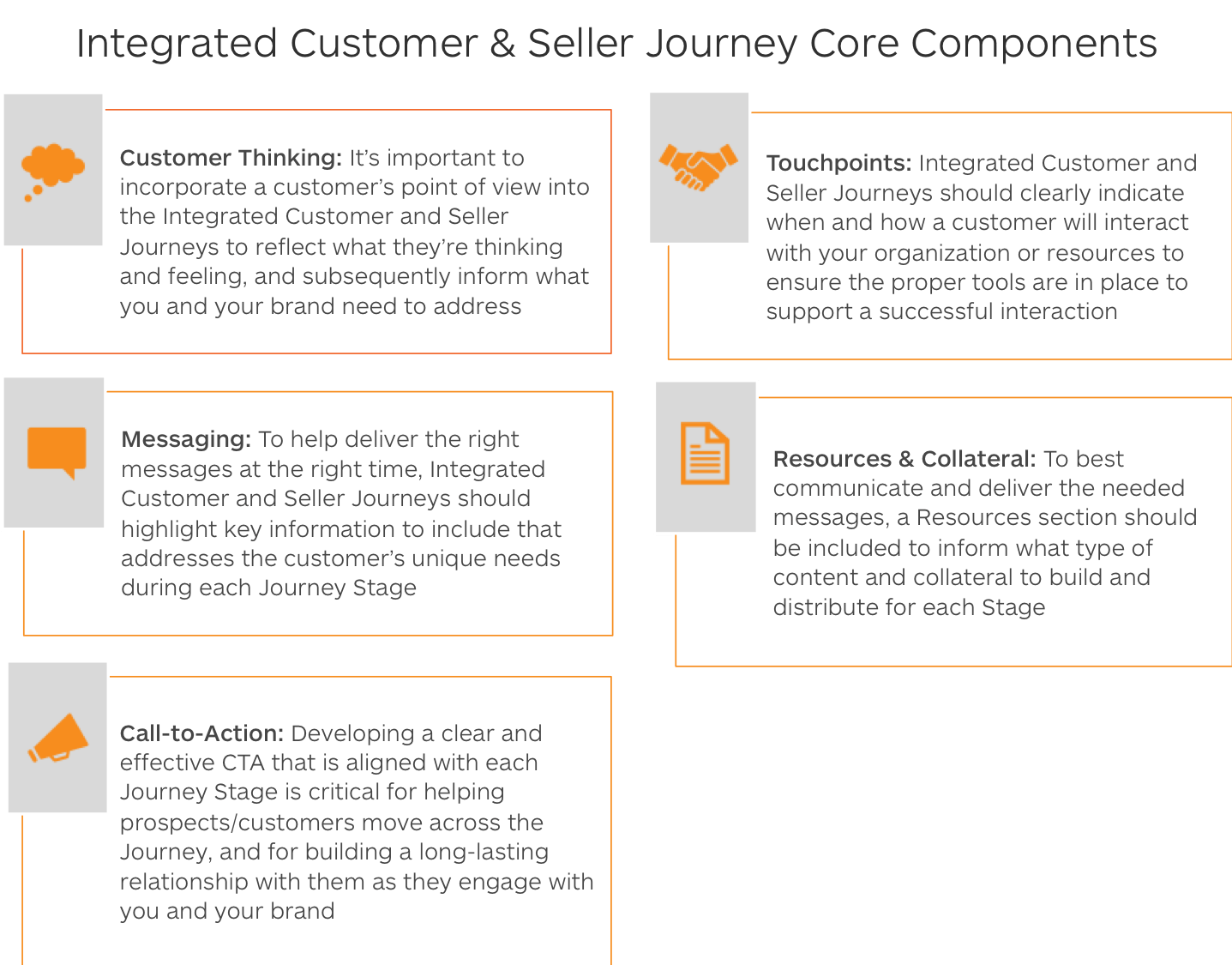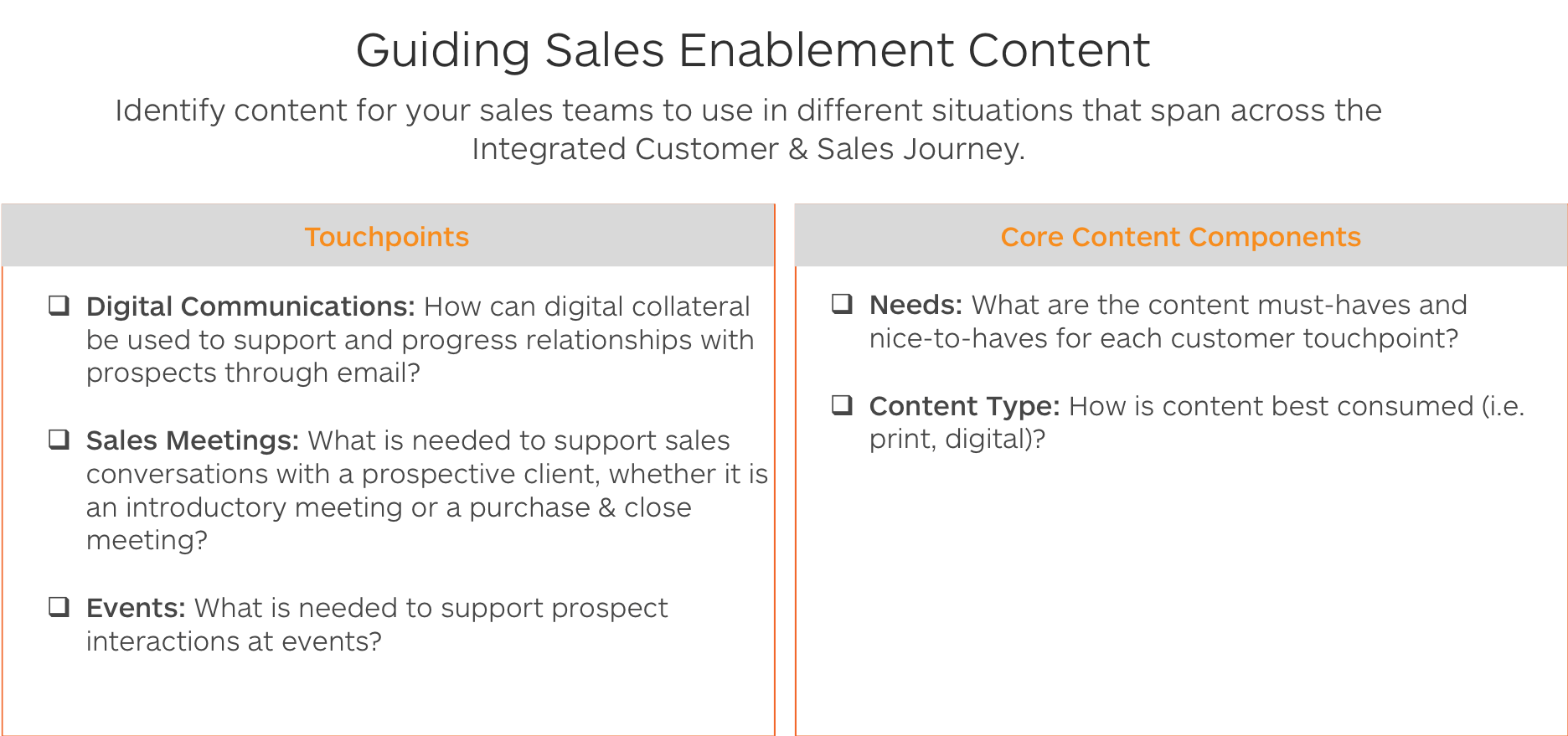Creating a Consistent Customer Experience with Sales Content
Every organization understands the importance of offering consistent products and services, but most don’t understand the role content can play in delivering a consistent customer experience. Consistency encourages regularity and reliability, which in turn makes customers feel safe and open to building a long-term relationship with you and your product or service. A study by McKinsey & Company found that a consistent customer experience across the entire customer journey will increase customer satisfaction, build trust, and boost loyalty. Moreover, companies focused on delivering a consistent customer experience have improved customer acquisition and strengthened retention.
Want to learn more? Read how an integrated customer-seller journey led to improved sales and better brand awareness. Download the case study at the bottom of this page.
So, what role does content play in creating a consistent customer experience?
Integrated Customer and Seller Journey
Customers engage with your organization for information via multiple channels. With 24/7 availability of your content and resources, it can be challenging to provide a consistent experience across every channel. Think of a consumer researching new savings and investment options to kick off 2019. A customer can easily research opportunities online, get side-by-side comparisons from financial providers, chat online or over the phone with an investment expert, and then set up an appointment at the bank or financial institution for a face-to-face deep-dive discussion. If the user experience across all these channels isn’t integrated – and customers receive different responses across different channels from the same company – the likelihood of acquiring and expanding your business with them diminishes greatly with each interaction.
It is essential to ensure every touchpoint with a customer efficiently and consistently delivers the same information across any channel. In one Forrester Consulting global study of salespeople and professionals supporting sales tools at financial services firms, respondents believed sales efforts would be omnichannel (66%), with personalized offers (58%), and may be driven by the customer (21%). It is important to develop an integrated customer and seller journey that identifies each stage of the buying process and corresponding content – website, customer service, live sales reps, events, etc. – across all channels. This is a crucial tool that can be used to help inform value-driven sales interactions based on customer behaviors, thoughts, and needs across touchpoints in their journey with your company.
Standardized Sales Enablement Best Practices
Offering a more consistent customer experience requires standardizing and documenting the information and processes involved in each sales engagement including content, messaging, and recommended channels. Providing your teams with a step-by-step content playbook helps ensure compliance in customer engagements through consistent development and delivery of the right information at the right time in the right channel. Standardized processes allow sales teams to more effectively sell by interacting in the same way across multiple channels and lines of business — accelerating purchase decisions and opening the door to future business growth.
On-going Sales Enablement
Sales teams are the face of your business and interact directly with customers daily through email, phone, and meetings. To drive consistent customer engagements, it is essential to educate and equip your sales teams on how to handle customer interactions across all channels. Activating your sales teams with effective guidance via defined integrated customer and seller journeys and standardized best practices playbooks, combined with on-going training, increases the chances of delivering a cohesive customer experience.
Delivering a consistent customer experience requires strategic alignment and constant execution. We’ve found that content creates the foundation needed to ensure a unified user experience and supports consistency across every touch, channel, and product.
Learn how MarketBridge developed an integrated customer and seller journey best practice playbook for a Fortune 1000 Financial Services provider.







